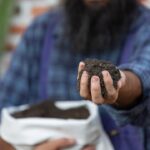Grazing management is critical to the health of both livestock and the land they graze. When managed properly, it can lead to improved pasture health, better livestock production, and long-term sustainability. However, many South African farmers make common mistakes that can harm both their animals and the environment. This article outlines 10 common grazing management mistakes and provides practical solutions for avoiding them.
1. Overgrazing Pastures
Overgrazing is one of the most common and detrimental mistakes in grazing management. It occurs when livestock are allowed to graze on a pasture for too long, depleting the grasses and plants before they have had time to recover. Over time, this leads to soil erosion, loss of plant diversity, and decreased pasture productivity.
Solution: Implement rotational grazing practices, where livestock are moved between different grazing areas. Allow pastures to rest and regrow before they are grazed again. Monitoring the pasture’s condition regularly will help you determine the optimal grazing period for each area.
2. Underutilizing Pastures
On the flip side, underutilizing pastures is another common mistake. This happens when farmers don’t fully use available pastureland, allowing it to become overgrown with weeds, invasive species, or shrubs. This leads to reduced grazing areas for livestock and can result in lower pasture quality.
Solution: Balance grazing intensity by rotating livestock effectively and ensuring that all pasture areas are used at appropriate times. Overgrown areas can also be managed by periodic mowing or controlled burning to maintain pasture health.
3. Failure to Maintain Soil Health
Soil health is the foundation of healthy pastures. Neglecting to monitor and improve soil health can lead to poor grass growth, low nutrient availability, and diminished pasture productivity. Problems like soil compaction, nutrient depletion, and acidification are common if the soil is not managed properly.
Solution: Regularly test the soil to check for pH levels, nutrient deficiencies, and other indicators of soil health. Use appropriate fertilizers, organic matter, and soil amendments as needed. Additionally, avoid heavy traffic on wet soils to prevent compaction.
4. Ignoring the Importance of Pasture Rotation
A lack of pasture rotation is a common mistake that results in poor grazing management. Allowing livestock to graze the same area continuously leads to uneven grazing pressure, damaging some areas while leaving others underutilized. This disrupts the natural balance of plant growth and soil health.
Solution: Establish a rotational grazing system where livestock are moved between different paddocks or grazing areas on a regular basis. This gives pastures time to recover and helps maintain a balanced grazing pressure across the farm.
5. Overstocking Livestock
Overstocking occurs when farmers have too many animals grazing on a given piece of land. This leads to overgrazing, reduced pasture quality, and increased pressure on soil health. Overstocking can also result in poor animal performance and a higher risk of disease outbreaks.
Solution: Determine the stocking rate based on the carrying capacity of the land, which depends on factors such as pasture quality, rainfall, and the type of livestock being grazed. Monitor the condition of both your pasture and livestock regularly to avoid overstocking.
6. Failing to Monitor and Adjust Grazing Pressure
Grazing pressure is the amount of grazing an area of pasture undergoes. Failing to monitor grazing pressure and make adjustments can lead to overgrazing in some areas and underuse in others. This results in uneven pasture conditions and can contribute to land degradation.
Solution: Regularly assess the grazing pressure on your pastures and adjust the number of animals or the length of time they spend in each grazing area. Keep track of how well pastures are recovering to ensure that grazing pressure is balanced.
7. Not Considering Seasonal Variability
South African farmers face significant seasonal variations in rainfall and temperature. Failing to adjust grazing management practices to account for seasonal changes can result in poor pasture conditions, especially during dry periods.
Solution: Adjust grazing practices based on seasonal conditions. During dry spells, consider reducing stocking rates or allowing longer rest periods for pastures. Additionally, plan for supplementary feeding when pasture growth is slow, such as during winter or drought periods.
8. Neglecting Weed and Pest Control
Weeds and pests can quickly take over grazing land, reducing the amount of available forage for livestock. Ignoring weed and pest control can result in the decline of pasture quality and an increase in the spread of undesirable plant species.
Solution: Regularly monitor pastures for weeds and pests. Implement integrated pest management strategies, including the use of herbicides, biological controls, and mechanical methods such as mowing or hand-pulling weeds. Keep pastures clean and ensure that grazing animals do not spread weed seeds between areas.
9. Inadequate Water Supply
Water is a crucial resource for livestock and pasture health. An inadequate or unreliable water supply can reduce animal performance, encourage overgrazing in some areas, and lead to pasture degradation.
Solution: Ensure that there is a reliable and consistent water supply for your livestock throughout the year. If needed, invest in water infrastructure such as troughs, dams, or water pipelines to distribute water evenly across grazing areas. Monitor water quality and make necessary adjustments to prevent contamination.
10. Lack of Record-Keeping and Monitoring
Without effective record-keeping and monitoring, it is difficult to make informed decisions about grazing management. Many farmers fail to track grazing schedules, pasture health, and livestock performance, making it hard to identify and address problems before they escalate.
Solution: Keep detailed records of grazing rotations, pasture conditions, livestock movements, and any changes in weather patterns. Regularly monitor and document pasture growth, weed presence, and any signs of soil erosion. Use this data to inform future grazing decisions and improve long-term grazing management.
Grazing management is essential for the productivity and sustainability of a farm. By avoiding these common mistakes—such as overgrazing, underutilizing pastures, neglecting soil health, and failing to rotate grazing areas—South African farmers can improve pasture quality, animal health, and farm profitability. Effective grazing management requires attention to detail, regular monitoring, and a commitment to sustainable practices. By implementing a well-thought-out grazing plan and making necessary adjustments based on seasonal and environmental factors, farmers can ensure that their land remains productive for generations to come.
Join 'Farmers Mag' WhatsApp Channel
Get the latest Farming news and tips delivered straight to your WhatsApp
CLICK HERE TO JOIN






